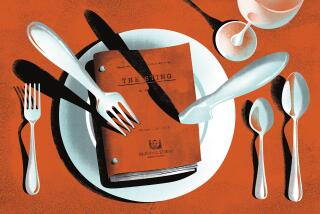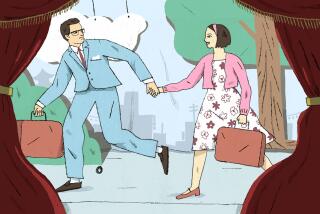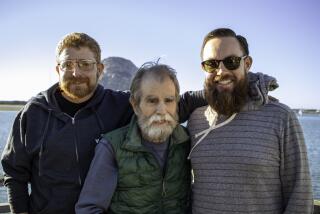Remembrance: Lunch with Carol Channing was never just lunch. It was a singular spirit in action

We’re all individuals, some more than others. And few quite like Carol Channing, who died Tuesday in Rancho Mirage. Those wigs, those eyes, that mouth, those teeth, the scarlet lips!
As a former Times theater critic and reporter, I recall the instances in the late 1970s and early ’80s when, no matter how ritzy the eating establishment might be, Channing came to the interview with her own food and water. Never mind that she asked for ice from the nearest waiter and never questioned how her personal water might theoretically get contaminated once the ice melted. But that was Carol Channing. She picked her battles.
And she knew how to do it. Behind that kooky facade was a whip-smart lady and charming performer who knew a lot more than she let on and would do anything to strike a pose that might astonish. She had me gaping when, in answer to my question about her showbiz beginnings, Channing broke into a recitation of a poem in ancient Gallic French about Vercingetorix, a charismatic Gaul general who nearly defeated the Romans before he died in 46 BC.
Her impromptu performance turned the heads of the lunch crowd in that sedate Music Center lunchroom. It also happened to be the poem with which Channing sought the attention of the William Morris Agency’s Abe Lastfogel. She was a Bennington College student then, with fire in her belly. Lastfogel, a hardened New Yorker, was flummoxed, she said — but apparently impressed. It did the trick.
Our second encounter happened when I was invited to a private luncheon with her and some top editors of The Times. It was not exactly a routine invitation for a second string theater critic. It seems Channing had read a piece of mine in the Calendar section of The Times the previous Sunday. It was a rumination about going to see my daughter, an acting student at the Juilliard School, perform on stage, and this critic-mother’s dilemma about what to say. What if I didn’t like what I saw?
The moment I walked in the room, Channing’s eyes lighted up and she exulted about how much she had enjoyed reading the piece. It put me at ease.
Channing regularly sent a card at holiday time. Some of it was PR of course, but sitting under my coffee table — it was too big to sit on it — is a gorgeous book of Al Hirschfeld cartoons that arrived one Christmas with a simple “to Sylvie” inscription. She appears in the book several times, but that wasn’t the point.
I followed her adventures after her separation from her first husband, Charles Lowe, who had controlled her career while they were married. After they parted company — she accused him of physical abuse and financial mismanagement, both of which he denied — she was able to give rein to her better angels. It’s a shame she could not have done it sooner — not only for her, but for the rest of us.
I saw a show she did with the lovely Rita Moreno in Palm Springs. They didn’t appear together, but sequentially. Channing was not at her best. It is not easy to grow older when you love the limelight as much as she did and have to watch it fade.
Those later efforts on stage — including “Legends” with an equally aging Mary Martin at the Ahmanson Theatre — were not memorable. She had a bigger-than-life talent that had been crammed into a clown persona for too many years, and yet she somehow managed to make it work most of the time. What might she have given us if left to her own devices? Only heaven knows.
More to Read
The biggest entertainment stories
Get our big stories about Hollywood, film, television, music, arts, culture and more right in your inbox as soon as they publish.
You may occasionally receive promotional content from the Los Angeles Times.






